Complete Solutions to Solved Example of chapter ORGANIC REACTION MECHANISM of Class 11 book with complete answers and questions
| Class 11 | CHEMISTRY |
| Chapter | ORGANIC REACTION MECHANISM |
| CENGAGE CHEMISTRY | Solved Example |
| Number Of Questions | 33 |
| Academic Year | 2023-24 |
(a) Explain how the sterochemistry of `SN^1` and `SN^2` differs.
(b) Explain the formation of `60 %` inverted and `40 %` racemic product from a typical `SN^1` reaction.
(c) Account for the following in terms of the rate of solvent in the above problem.
(i) The reaction is first order.
(ii) Under what conditions the rate expression is more than first order ?
(iii) What is the order and molecularity ?
View Solution(a) Define dielectric constant.
(b) How does dielectric constant affect `SN^1` rates ?
(c) Explain why solvolyses are much faster in `EtOH` than in acetone even though both solvents have the same dielectric constants.
View Solution(a) Show by enthalpy diagram the rate of solvolysis of `t-BuCl` on increasing the polarity of solvent.
(b) Give the equation of methanolysis of `[Me_3CSMe_(2)]^(oplus) Br^(Ө)`.
(c) Does the effect of solvent prevail for solvolysis of `[Me_3CSMe_(2)]^(oplus)` ?
View SolutionHydrolysis of 2-bromo-3-methyl butane `(2^@)` yields only 2-methy-2-butanol `(3^@)`, explain.
View SolutionWrite structure for the solvolysis of `Et_3 C-Cl` with :
(a) `MeOH`
(b) `MeCOOH`
(c) `HCOOH`.
View SolutionExplain the relative rates of `RX` with `H_2 O/EtOH` at `25^@ C` as given :
(i) `MeBr (2140)`
(ii) `MeCH_2 Br(171)`
(iii) `Me_2 CHBr (4.99)`
(iv) `Me_3CBr (1010)`
(b) Why is `EtOH` added to water ?
View SolutionPredict the order of nucleophicity of `X^(Ө)` in the following reaction :
 .
.
View SolutionGive the product of the following displacement reactions :
(a) `(R )-CH_3CHBrCH_2CH_3 + MeO^(Ө)`
(b) `(S)-CH_3CHBrCH_2 CH_3 + MeO^(Ө)`
(c) rac, cis-Iodo ethyl cyclohexane `+ overset (Ө)O H`
(d)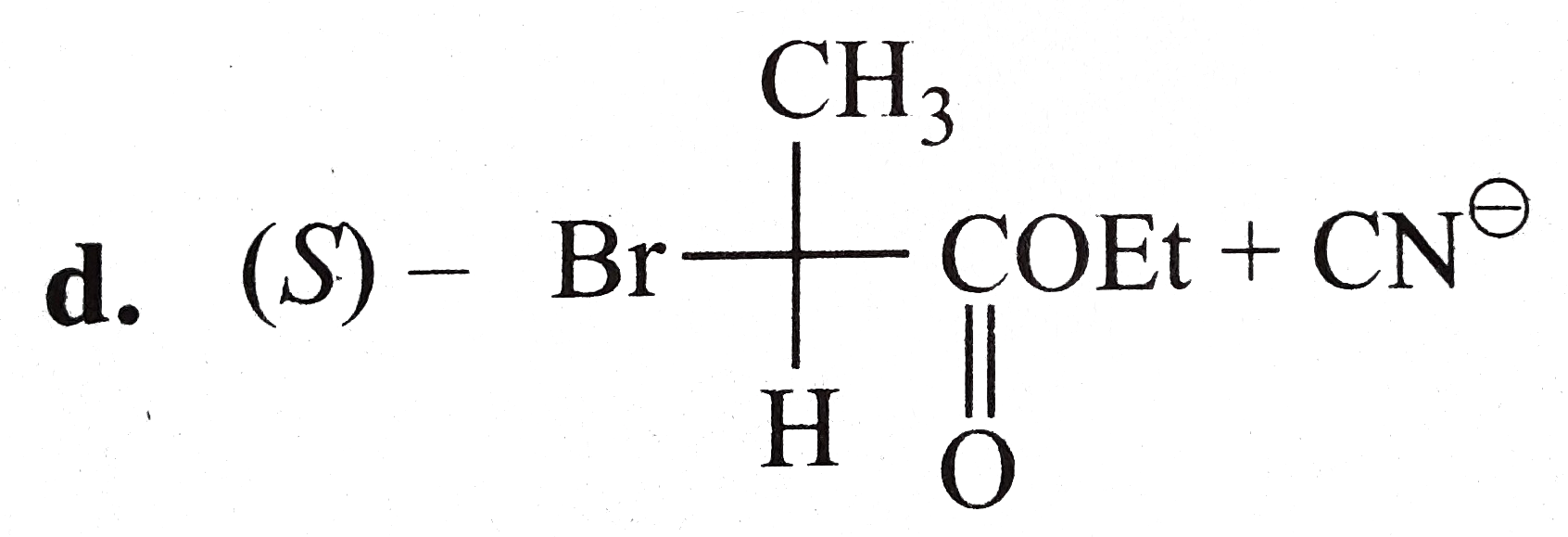 .
.
View SolutionExplain
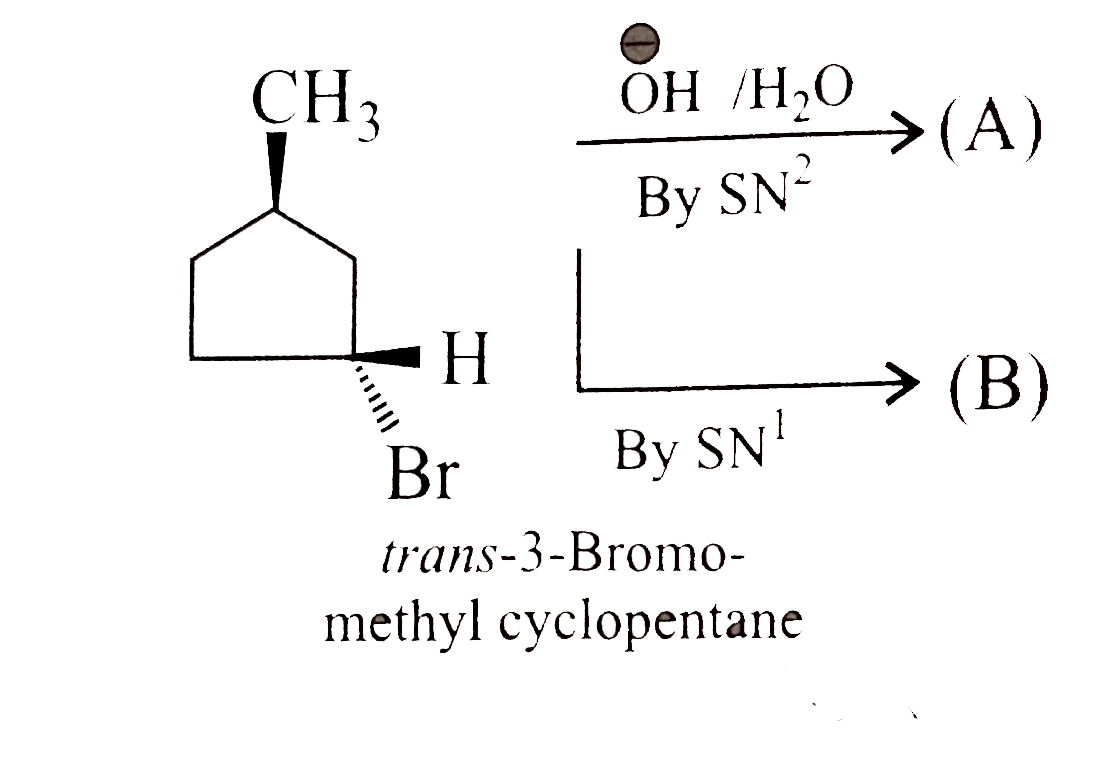 .
.
View SolutionWhen 3-chlorocyclopropene (A) is treated with `SbCl_5`, it gives a stable salt `(B), C_3H_3SbCl_6`, which is highly polar. Further, when (A) is treated with `AgBF_4`, it gives a white precipitate of `AgCl` and a crystalline salt (C). Explain.
View SolutionExplain :
(a) An aq. Solution to troplylium bormide `(C_7 H_7Br)` on treatment with `AgNO_3` gives a pale yellow precipitate.
(b) Cycloheptatrienyl cation has a low `pi` -electron energy than its open-chain counterparts.
(c) Cyclo-octatetraene reacts with 2 mol of potassium to yield a stable compound.
View SolutionGive the order of reactivity towards aqueous `HCOOH` of the following.
 .
.
View SolutionGive the order of hydrolysis in `SN^1` process for the following :
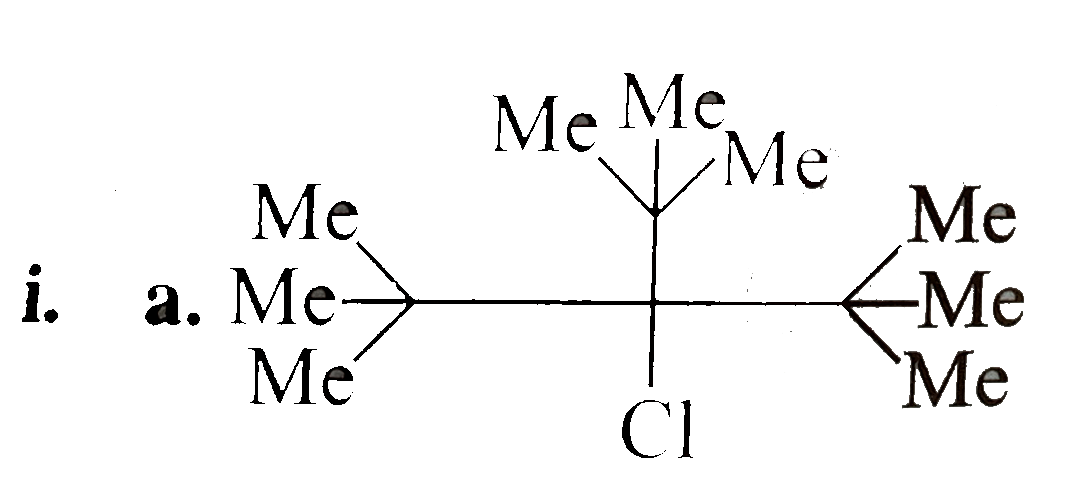
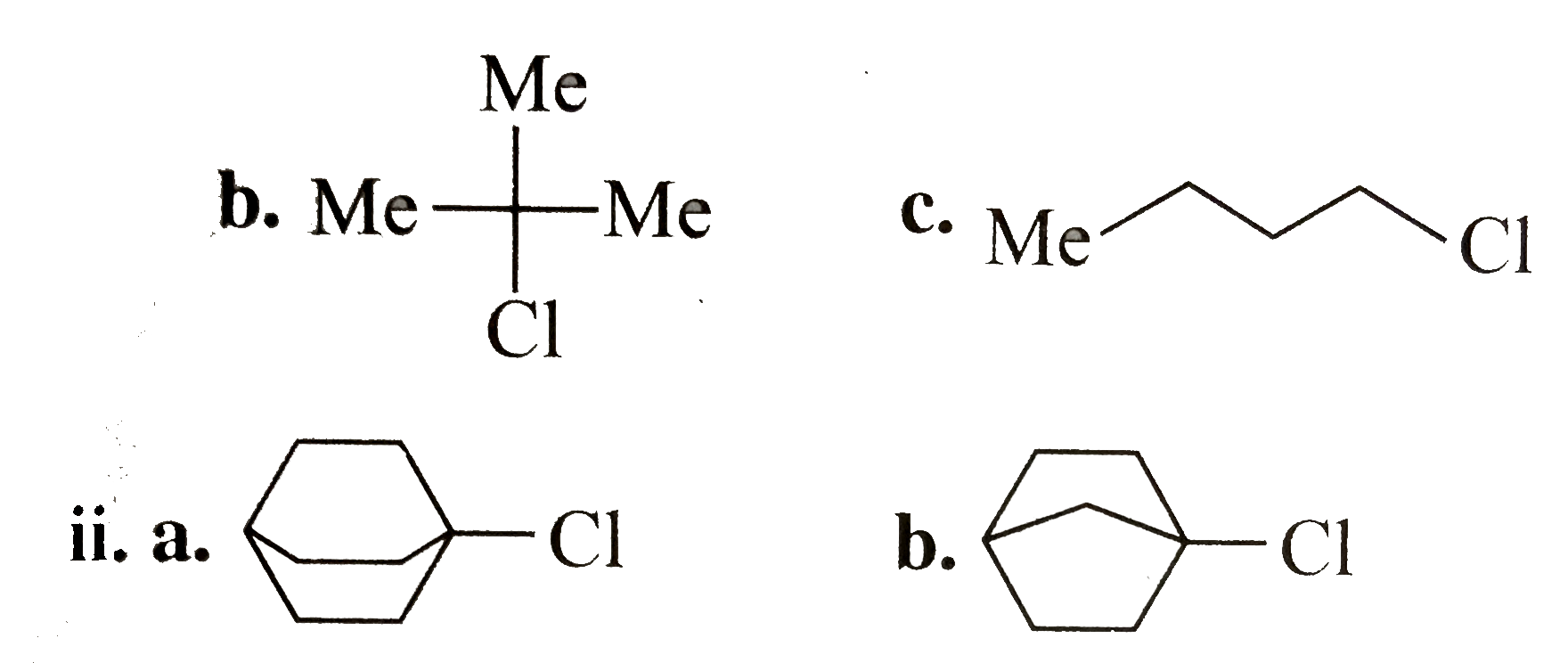 .
.
View SolutionGive the order of `(a)` nucleophilicity `(b)` basic character, and `(c)` fugacity of the following :
(i) `F^(Ө)`
(ii) `Cl^(Ө)`
(iii) `Br^(Ө)`
(iv) `I^(Ө)`.
View SolutionGive the most reactive substrate in each of the following pair with `overset (Ө) O H` ions under `SN^2` conditions.
(a) `C_2H_5 I` and `C_2H_5 Cl`
(b) `p-Br-C_6H_4CH_3` and `PhCH_2Br`
(c) `CH_3Cl` and `CH_2Cl_2`
(d)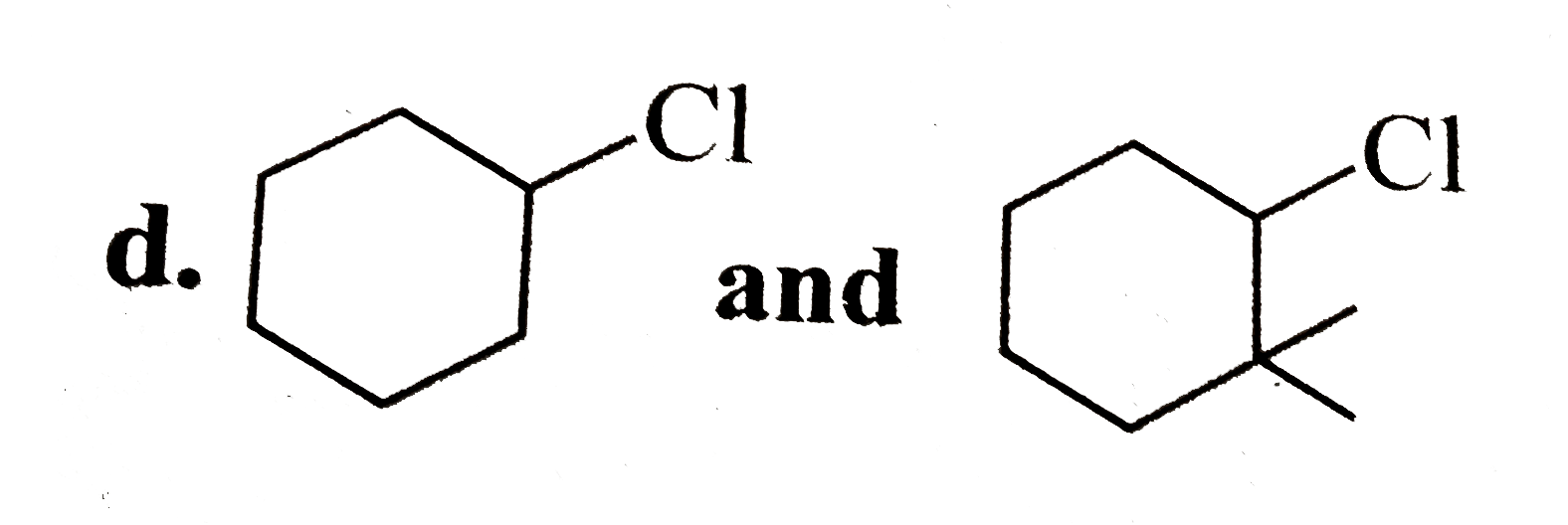
View SolutionOutline the synthesis of following compounds from suitable nucleophiles and an appropriate halide.
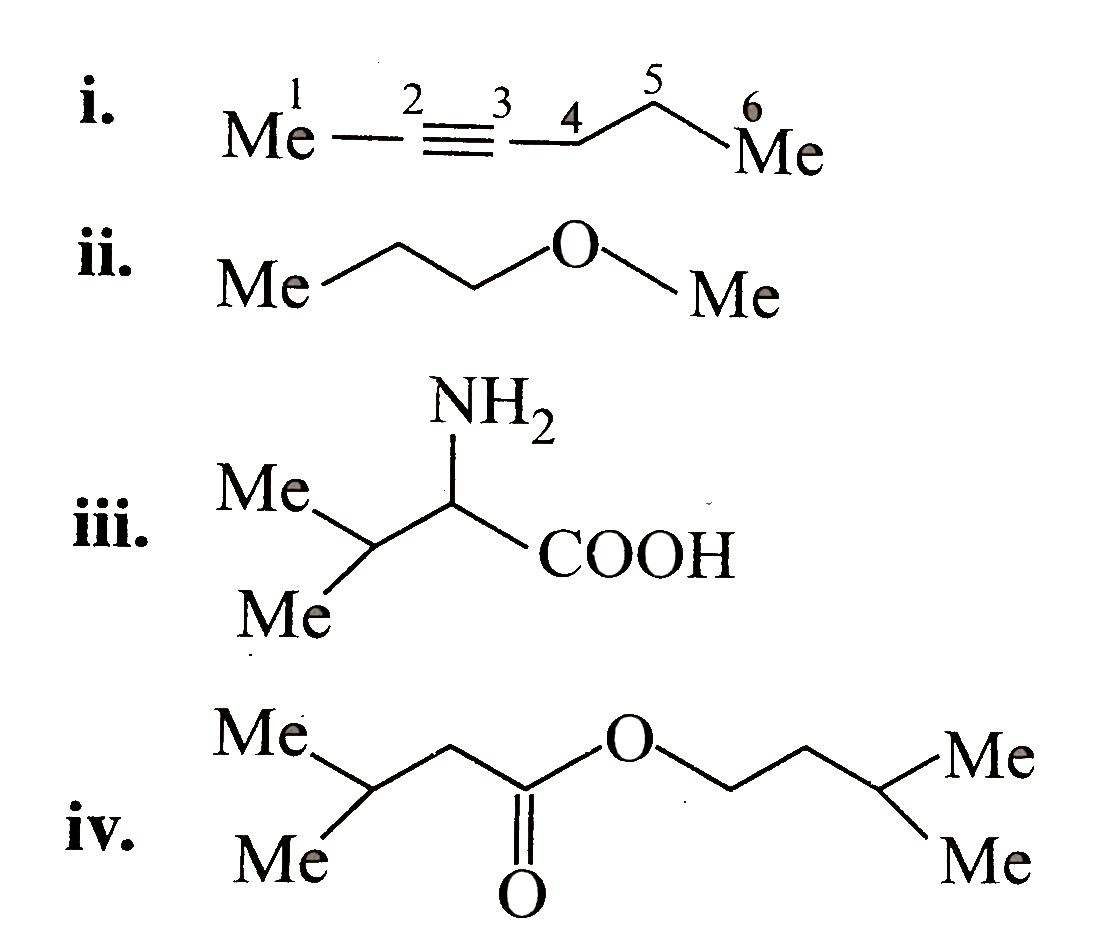 .
.
View SolutionGive a suitable mechanism for the following :
 .
.
View SolutionPredict the order of reactivity of the following halides with (a) NaI in acetone
(b) aq.alcoholic `AgNO_3`
(i) `CH_3Br`
(ii) `C_2H_5Br`
(iii) `PhCH_2Br`
(iv) .
.
View SolutionExplain :
(a)`ClCH_2OCH_3` (chloromethyl methyl ether) undergoes `SN^1` reaction.
(b) `(+)-4` -Bromo-2-pentene forms a racemic mixture on treatment with `NaI`.
View SolutionWrite the products of the following `SN` reactions.
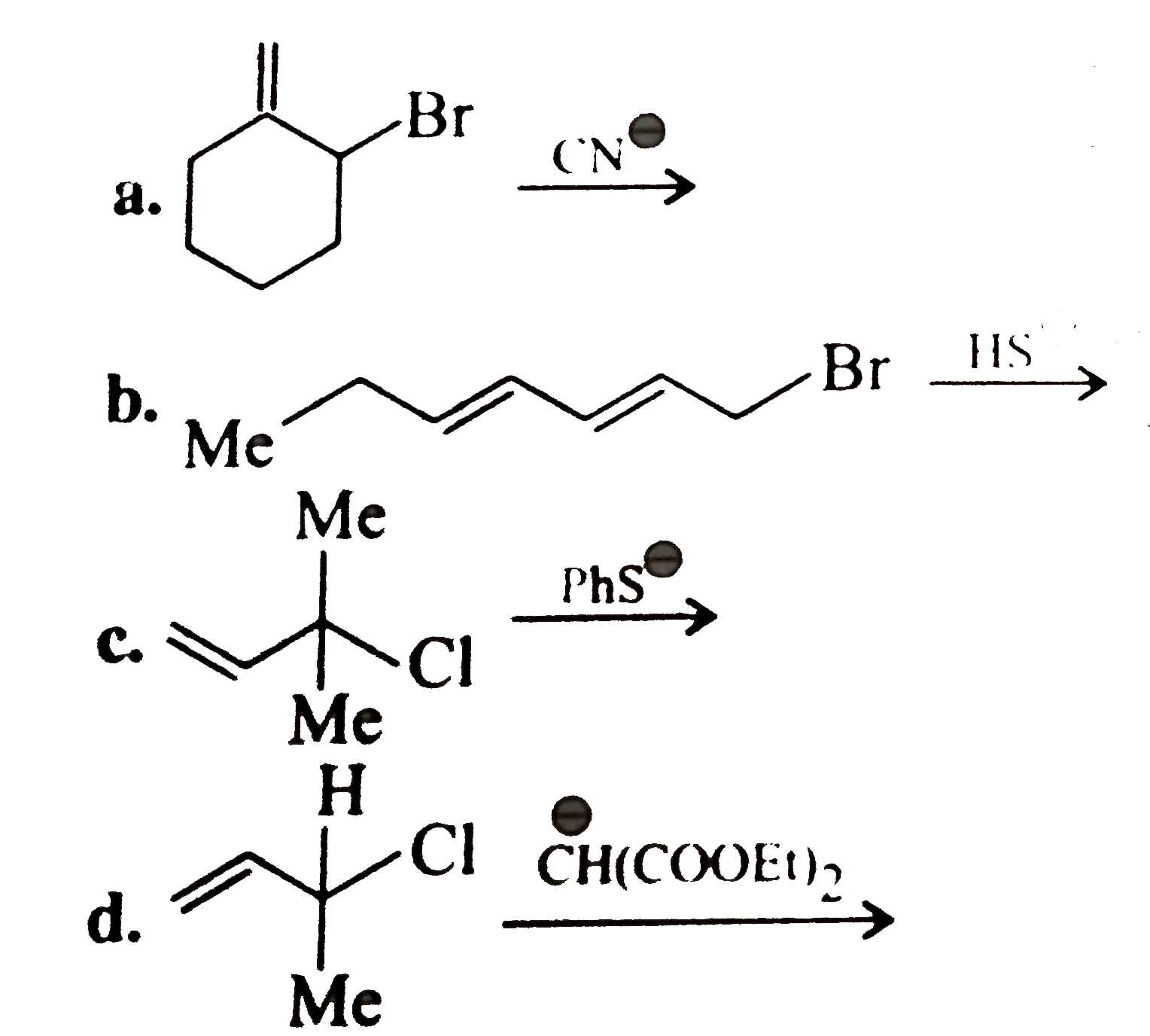 .
.
View SolutionComplete the following reaction

View SolutionBromobenzene can be dehydrobrominated to benzyne by three possible routes. Explain. Which paths are desirable ?
View SolutionClassify the following reactions as addition, elimination, substitution, condensation, rearrangement, geometric isomerisation, or oxidation/reduction.
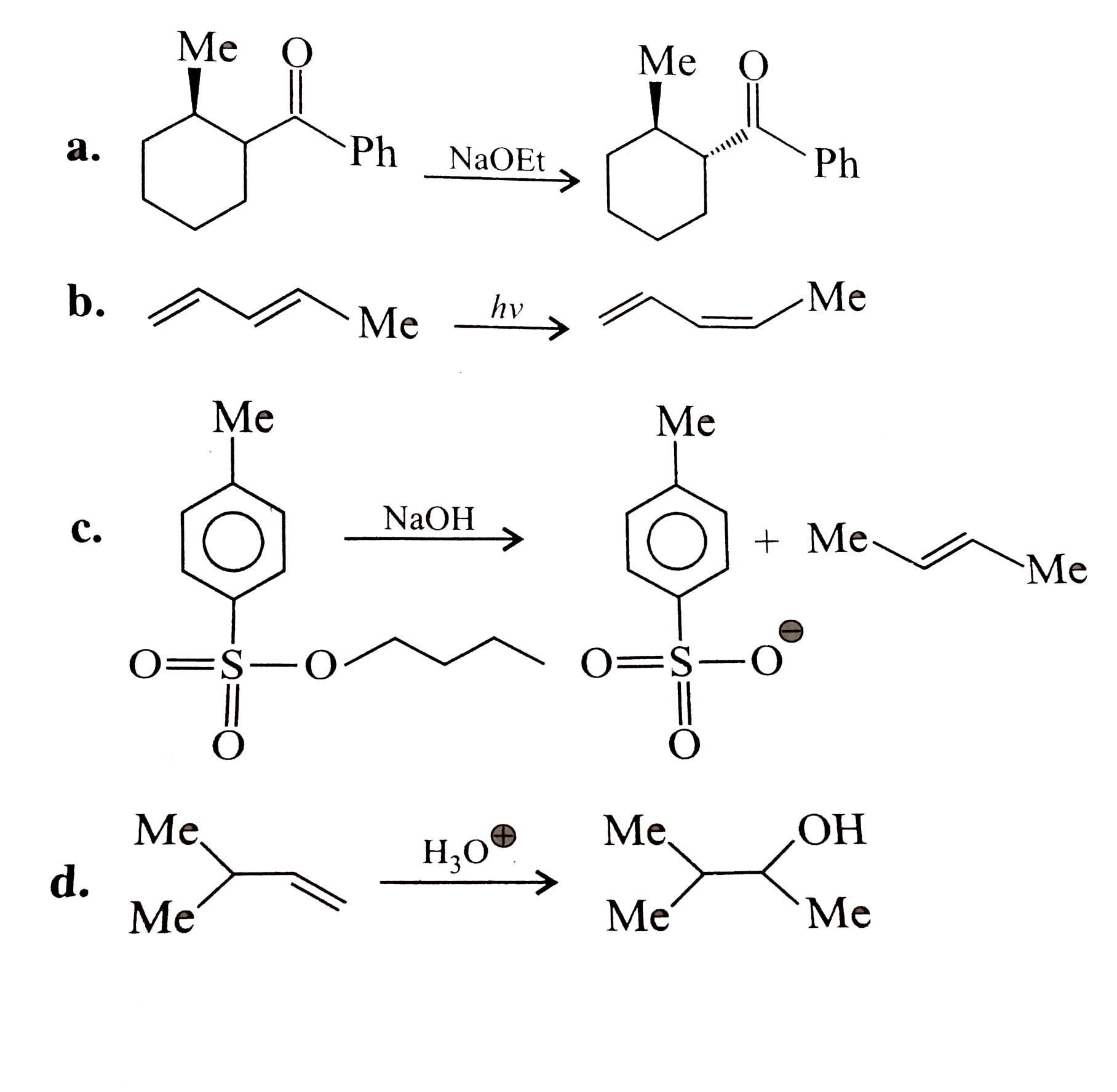
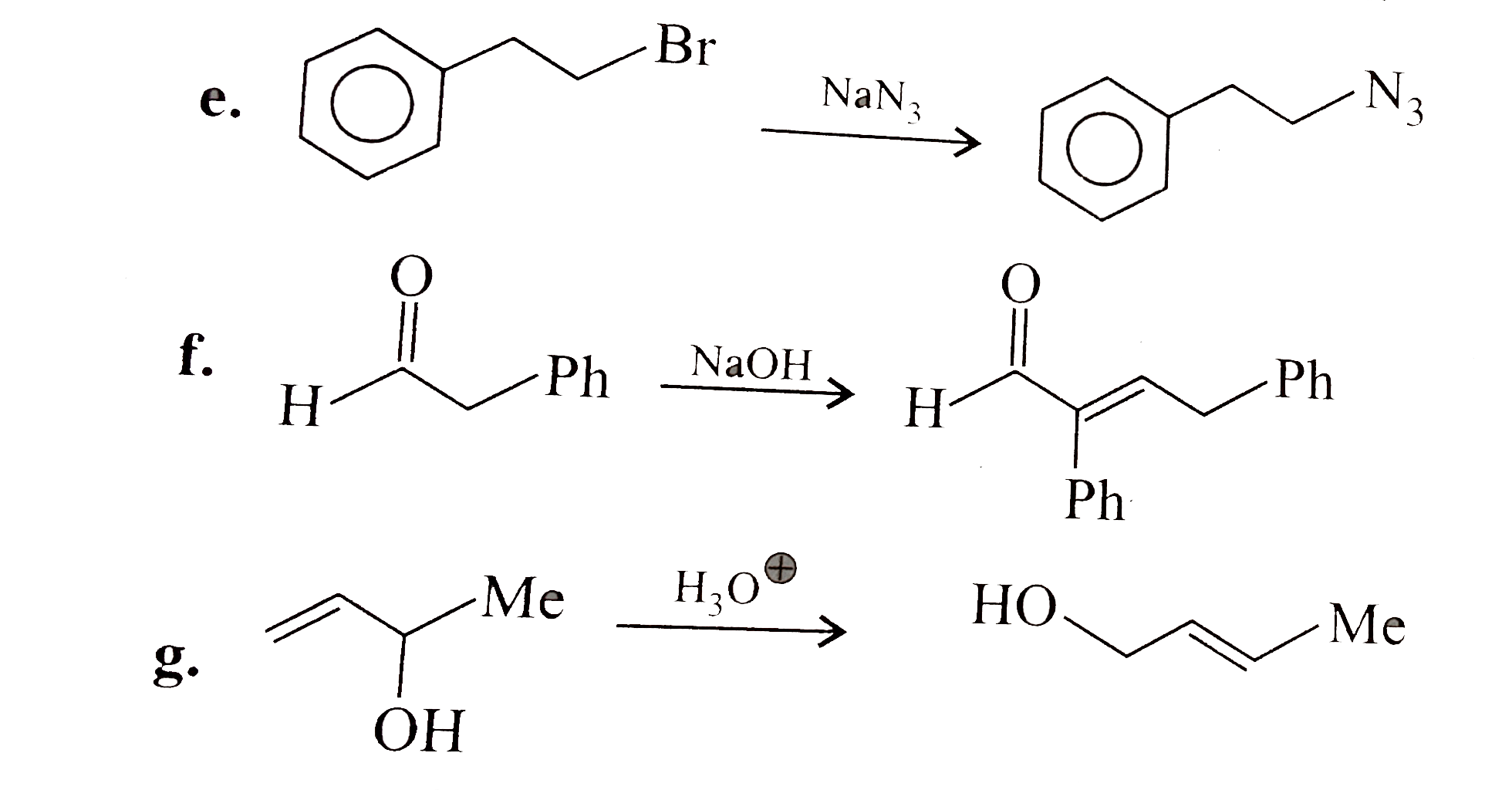 .
.
View SolutionFrom the following elimination reactions, predict which one is Hofmann or Saytzeff (Zaitev) type.

View SolutionWhich one is more reactive towards acidcatalysed hydration ? Predict the stereochemical alcohols formed form the compound.
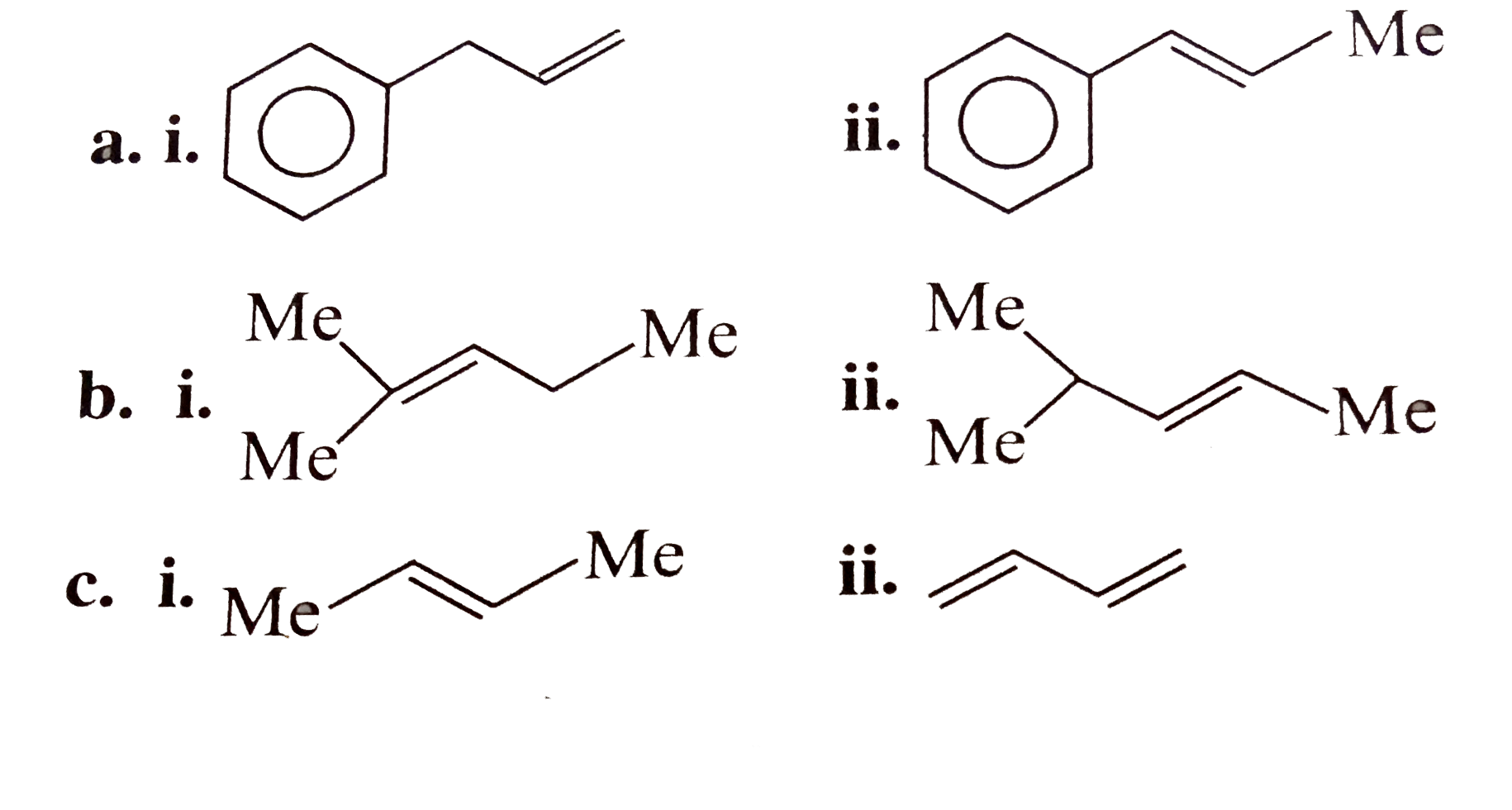 .
.
View SolutionWhich one hydrolyses at a faster rate by `SN^1` mechanism ?
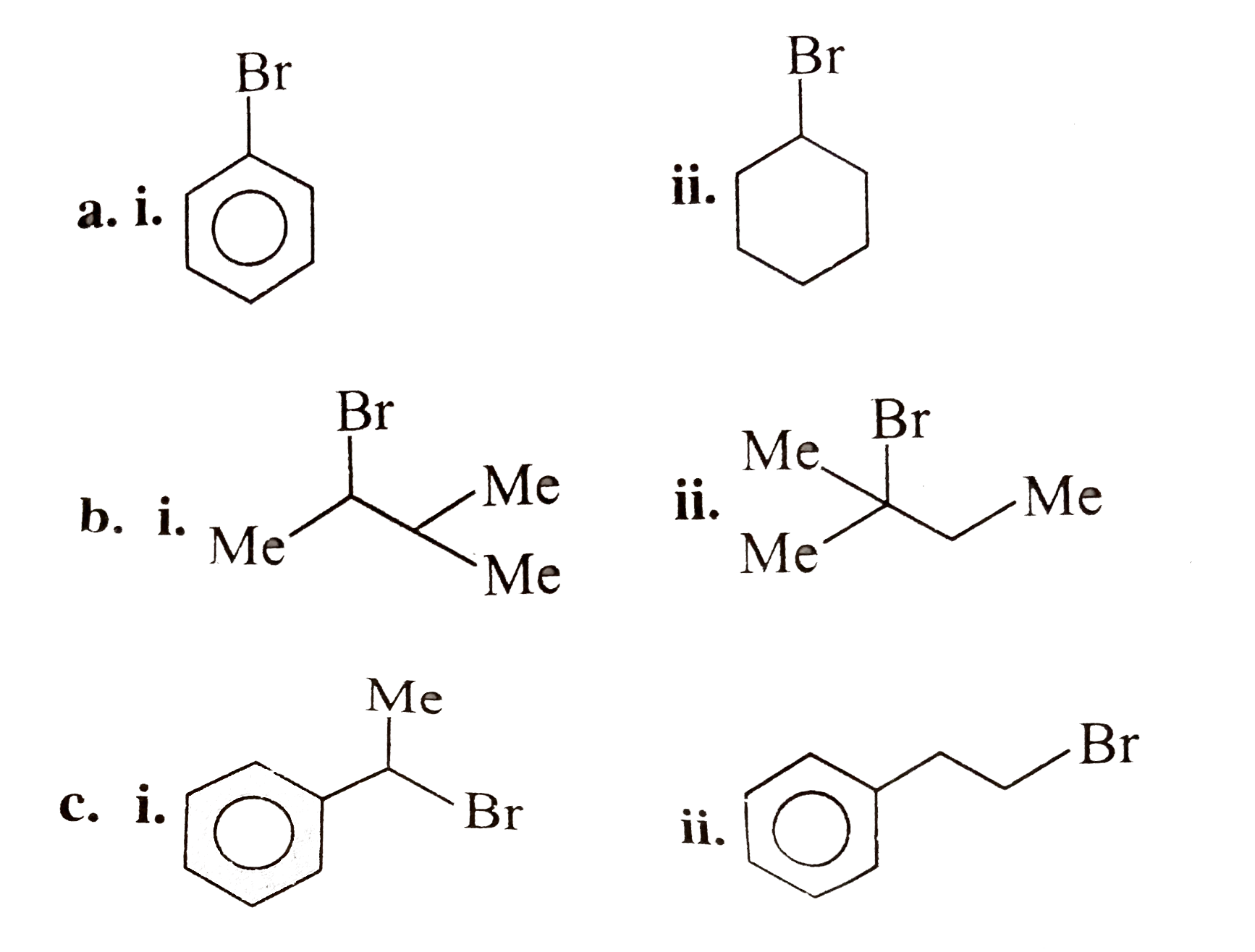 .
.
View SolutionExplain :
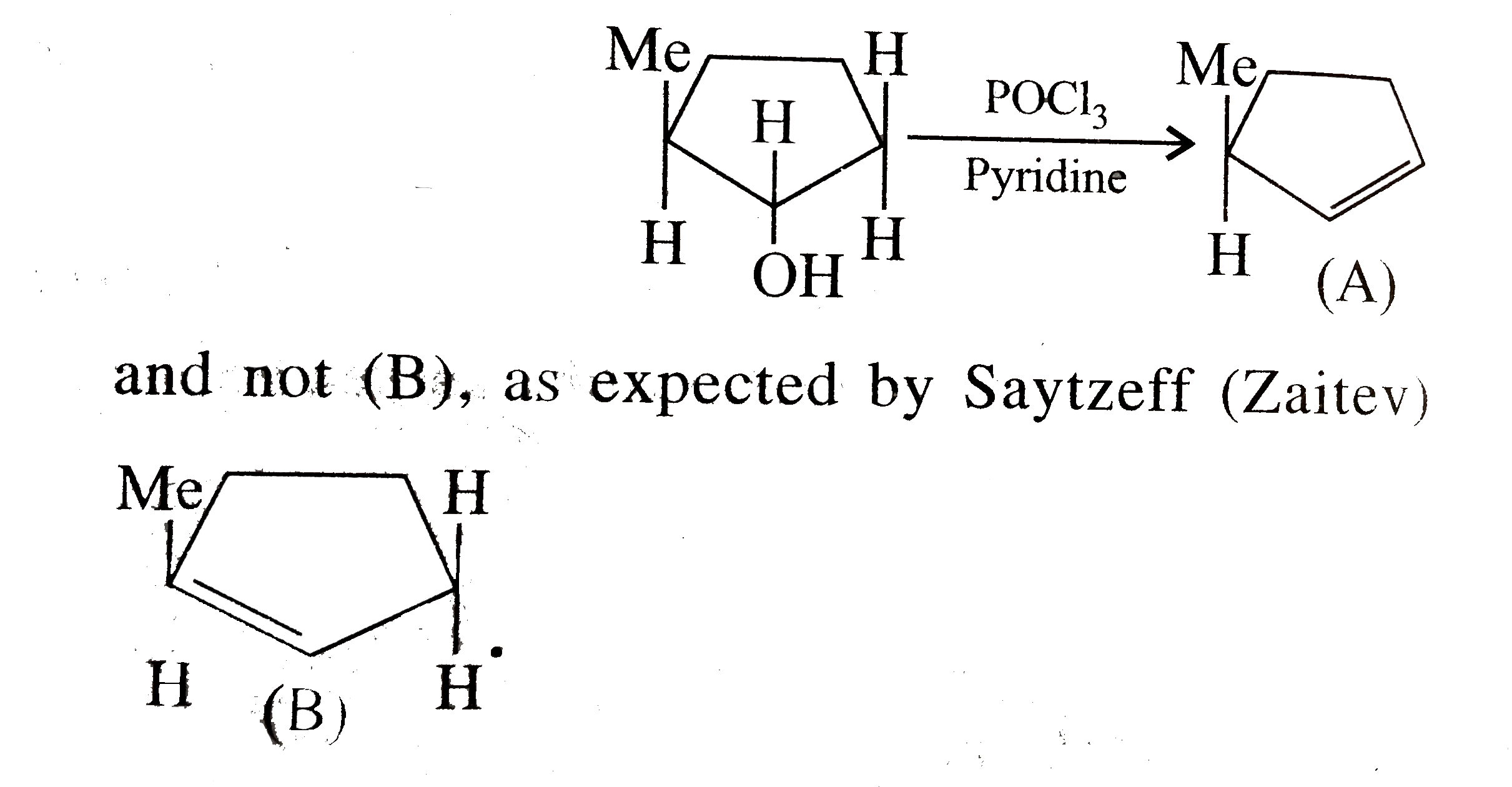
View SolutionWhat are the products of addition of `D_2` to trans-2-pentene.
View SolutionMeso-2,3-dibromobutane reacts with iodide ion more rapidly than does `(+-)` compounds. What are the respective alkenes formed ? Explain.
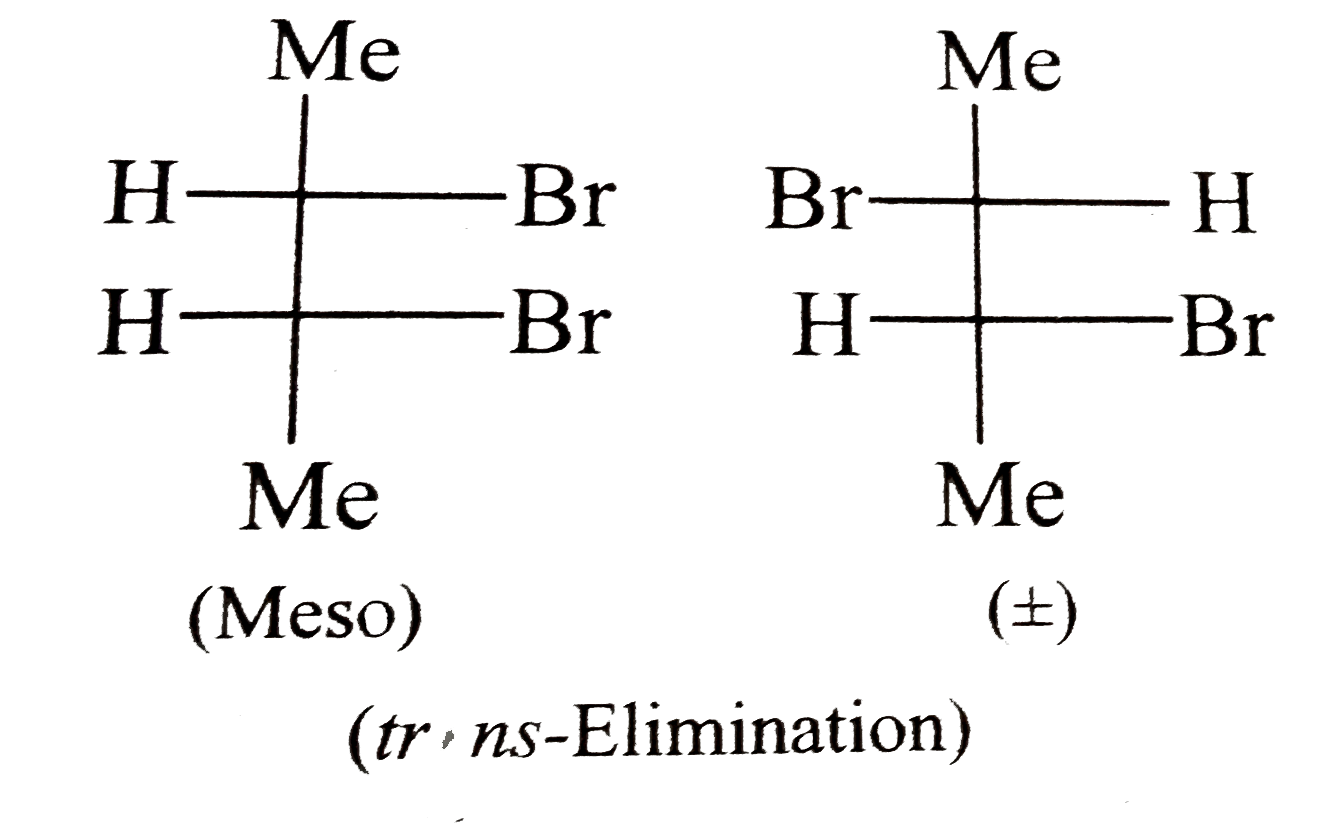 .
.
View SolutionMustard gas `(ClCH_2CH_2)_2-S` hydrolysed by water to `Cl(CH_2)_2 S(Ch_2)_2 OH` much faster than expected for a primary halide. Offer an explanation.
View SolutionGive the product, indicating stereo-chemistry of cyclohexene with :
(a) `Br_2`
(b) `Br_2 "in" NaCl`
(c) `Br_2 "in" CH_3 OH`
(d) `Br_2 "in" H_2 O`
( e) `KI//H_3 PO_4`.
View Solution1,2-Dimethylcyclohexene undergoes only trans-addition with `HBr` in non-polar solvents but both cis-and trans-additions occur with aq. Acid. Explain.
View SolutionComplete the following and state the relations between configurations of the reactant and products.
(i) `._(D-)MeCH(OH)Et + Ac_2 O rarr` ?
(ii) `._(D-)MeCH(Cl)COOH + 2 NaOH rarr` ?
View Solution
Solved Example questions and complete solutions for chapter ORGANIC REACTION MECHANISM of CENGAGE CHEMISTRY (HINGLISH) of Class 11